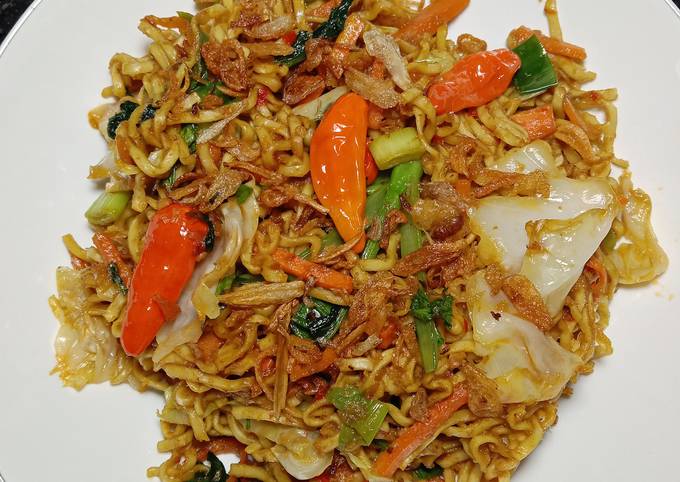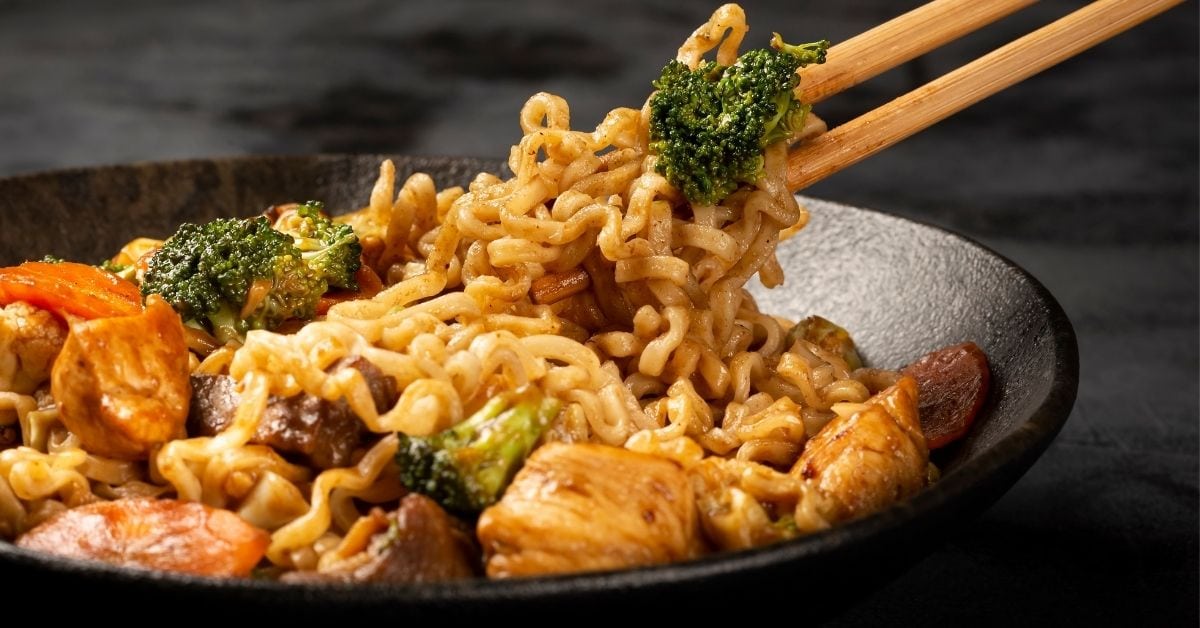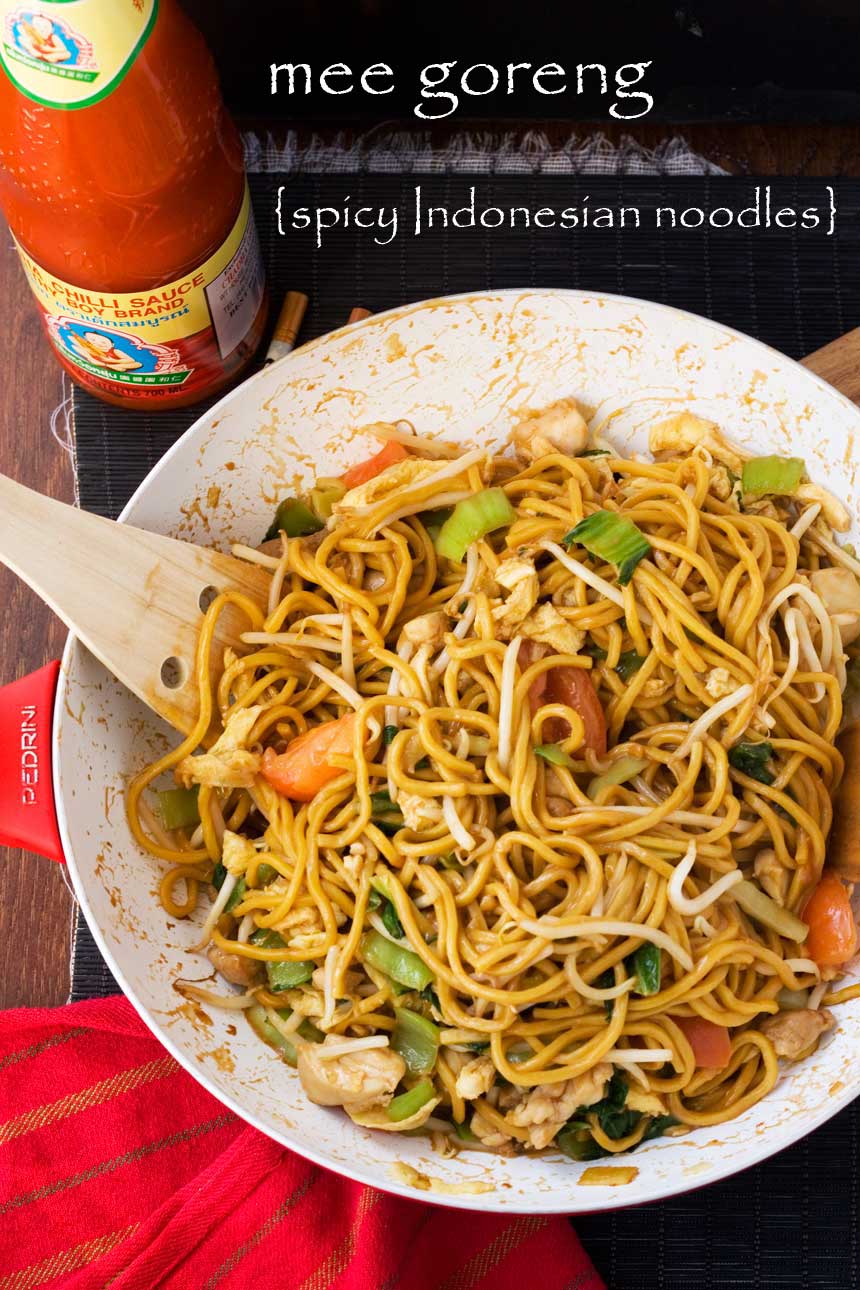How to Make Spicy & Savory Javanese Fried Noodles: A Journey into Authentic Indonesian Cuisine

Are you ready to embark on a culinary adventure that will transport your taste buds to the vibrant streets of Java? Today, we're diving into the world of Resep mie goreng Jawa pedas dan gurih, an authentic Javanese noodle dish that's as spicy as it is savory. This isn't just a mie goreng recipe; it's a journey into the heart of Indonesian cuisine. So, let's roll up our sleeves and get started!
What Makes Javanese Fried Noodles Special?
Javanese fried noodles, or mie goreng Jawa, stand out in the world of Asian cuisine. They're not just another noodle dish; they're a symphony of flavors that dance on your tongue. The secret? A blend of spices that's as rich as Java's history, combined with a kick of heat that's as intense as the island's tropical climate.
Gather Your Ingredients: The Building Blocks of Flavor
Before we dive into the cooking process, let's gather our ingredients. Remember, the key to any authentic Javanese noodles lies in the freshness and quality of the ingredients.
For the Spice Paste (Bumbu)
- 5 shallots or 1 small red onion, peeled and halved
- 3 cloves garlic, peeled
- 3-5 bird's eye chilies (adjust to taste)
- 3 candlenuts or macadamia nuts
- 1 teaspoon palm sugar or brown sugar
- 1 teaspoon salt
- 1 teaspoon white peppercorns
- 1 teaspoon terasi (shrimp paste), toasted
For the Noodles
- 400 grams fresh egg noodles
- 2 tablespoons vegetable oil
- 2 eggs, beaten
- 2 cups bean sprouts
- 2 cups Chinese cabbage, thinly sliced
- 2 green onions, thinly sliced
- 2 tablespoons kecap manis (sweet soy sauce)
- 1 tablespoon light soy sauce
- 1 teaspoon fish sauce (optional)
Garnishes
- Fried shallots
- Chopped fresh tomatoes
- Cucumber slices
- Lime wedges
- Sambal (chili sauce)

Preparing the Spice Paste: The Heart of the Dish
The spice paste, or bumbu, is the heart of our Resep mie goreng Jawa pedas dan gurih. Think of it as the conductor of our flavor symphony. To prepare it, simply blend all the bumbu ingredients together until you get a smooth paste. You can use a traditional mortar and pestle if you want to stay true to the authentic Javanese way, or a food processor for convenience.
Cooking the Noodles: Where the Magic Happens
Now that our bumbu is ready, it's time to cook the noodles. This is where the magic happens, where the humble noodle transforms into a dish that's uniquely Javanese.
Prepare the Noodles: Boil the noodles according to the package instructions until al dente. Drain and set aside.
Stir-Fry the Bumbu: Heat the vegetable oil in a wok over medium heat. Add the bumbu and stir-fry until fragrant, about 3-5 minutes. This is where the aroma of Java will start to fill your kitchen.
Add the Eggs: Pour in the beaten eggs and scramble until cooked.
Add the Vegetables: Throw in the bean sprouts, Chinese cabbage, and green onions. Stir-fry until the vegetables are slightly wilted but still crisp.
Add the Noodles: Toss in the cooked noodles. Stir well to combine all the ingredients.
Season: Pour in the kecap manis, light soy sauce, and fish sauce (if using). Stir well to ensure the noodles are evenly coated with the sauce.
Taste Test: Give the noodles a taste. If it's not spicy or savory enough for you, adjust the seasoning accordingly.

Serving Your Javanese Fried Noodles: The Grand Finale
Your mie goreng Jawa pedas dan gurih is almost ready. The final touch? The garnishes. They're like the finishing notes of our symphony, adding layers of flavor and texture.
Transfer the noodles to a serving plate. Top with fried shallots, fresh tomatoes, cucumber slices, and lime wedges. Serve with sambal on the side for those who want an extra kick of heat.
The Perfect Pairing: What to Serve with Your Mie Goreng
While your Resep mie goreng Jawa pedas dan gurih can stand alone as a meal, it's even better when paired with other dishes. Consider serving it with Indonesian classics like satay or gado-gado. For a refreshing contrast, pair it with a cold glass of es teh manis, Indonesian sweet iced tea.
Conclusion: Your Culinary Journey to Java
Congratulations! You've just cooked up a storm of flavors with your Resep mie goreng Jawa pedas dan gurih. This dish is more than just a meal; it's a culinary journey to the heart of Java. It's a testament to the richness of Indonesian cuisine, a symphony of spices that tells a story of tradition and culture.
So, what are you waiting for? Grab your fork (or chopsticks), take a bite, and let the flavors transport you to the vibrant streets of Java. Selamat makan! (Enjoy your meal!)
FAQs
Can I use dried noodles instead of fresh ones? Yes, you can. Just make sure to cook them according to the package instructions before using them in the recipe.
What can I substitute for candlenuts? Macadamia nuts are a good substitute for candlenuts. They have a similar texture and mild flavor.
Can I make the spice paste ahead of time? Yes, you can make the bumbu ahead of time. It will keep in the refrigerator for up to a week, or in the freezer for up to a month.
How can I make my mie goreng more spicy? You can add more bird's eye chilies to the spice paste, or serve the dish with extra sambal on the side.
What does 'pedas dan gurih' mean? 'Pedas dan gurih' is Indonesian for 'spicy and savory'. It's a common flavor profile in Indonesian cuisine.
For more insights into Indonesian cuisine, check out these resources:

Belum ada Komentar untuk "How to Make Spicy & Savory Javanese Fried Noodles: A Journey into Authentic Indonesian Cuisine"
Posting Komentar